It was puzzling to find this old radio in such a good exterior condition. What was its story ?
Table of Contents
- Overview
- History check
- Stations come in very faintly
- Troubleshooting
- IF Frequency estimation
- AM “Bandspread” band
- Wrapping up
Overview
Some photos with the radio, as bought. Came with the original pouch which is also in very good condition.
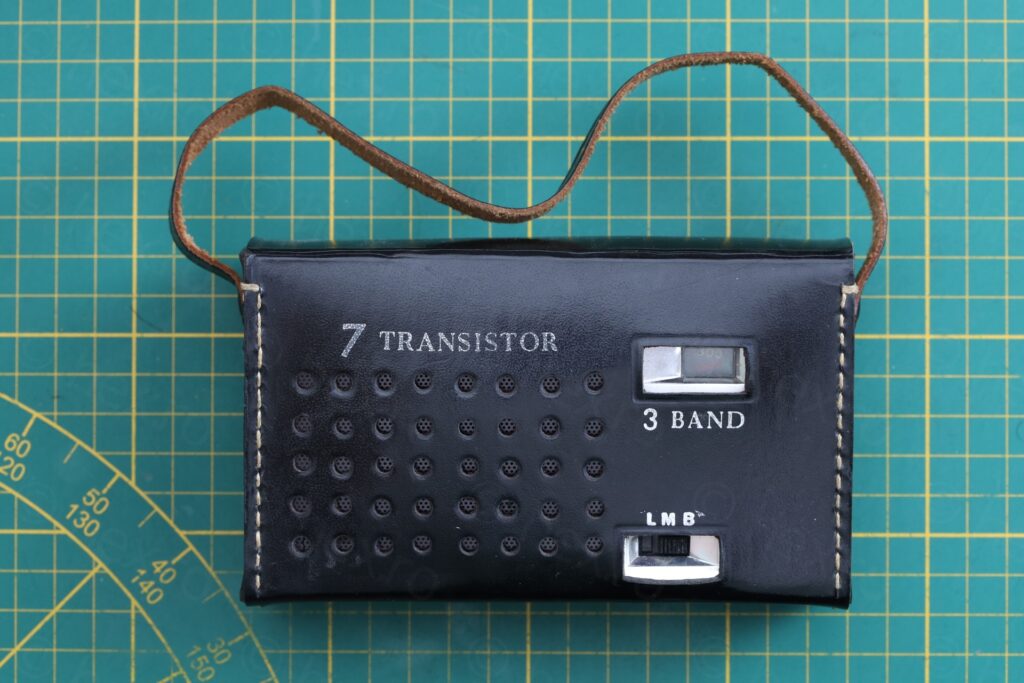
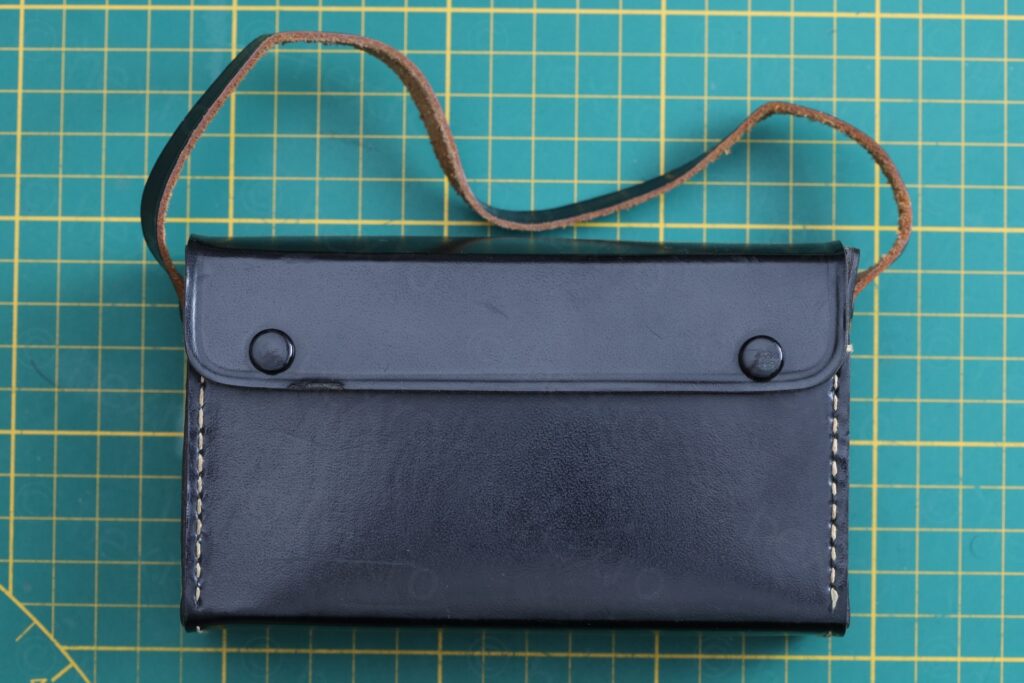
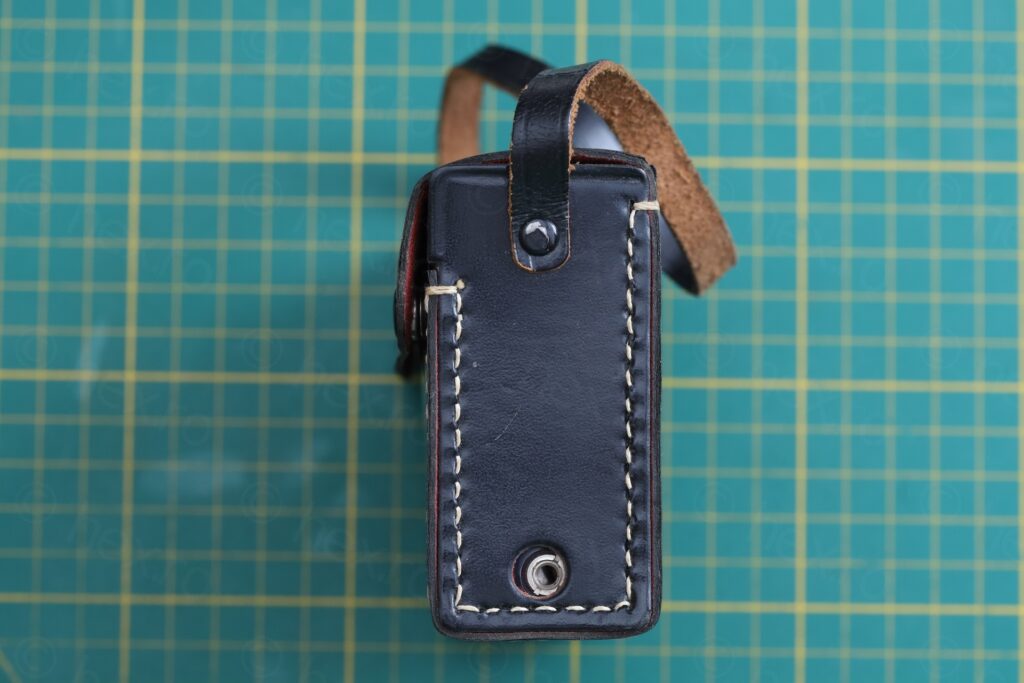
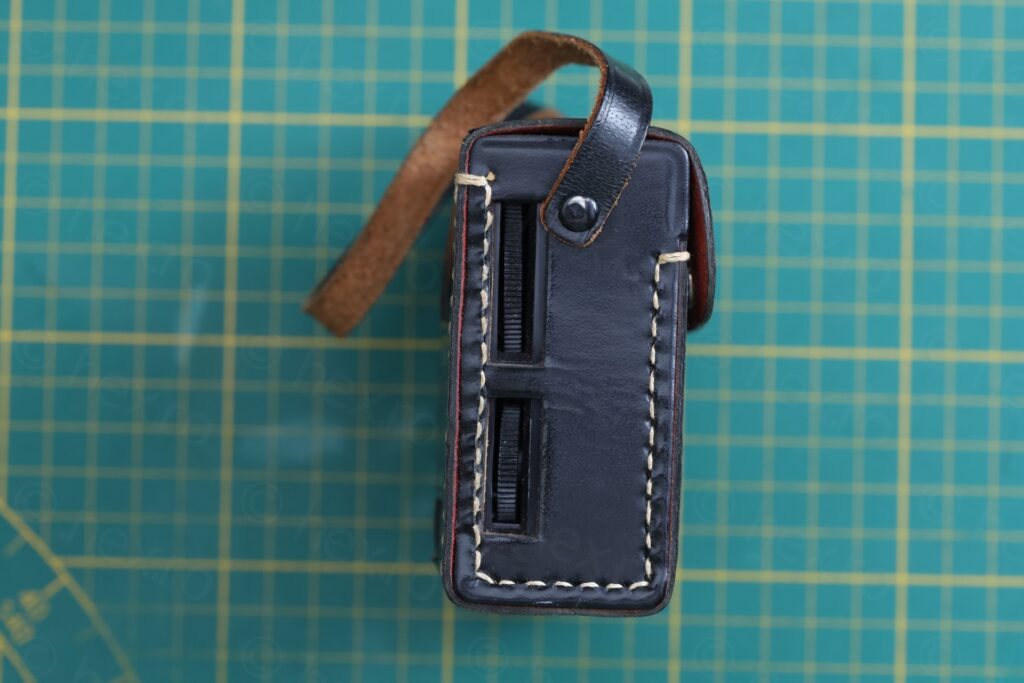
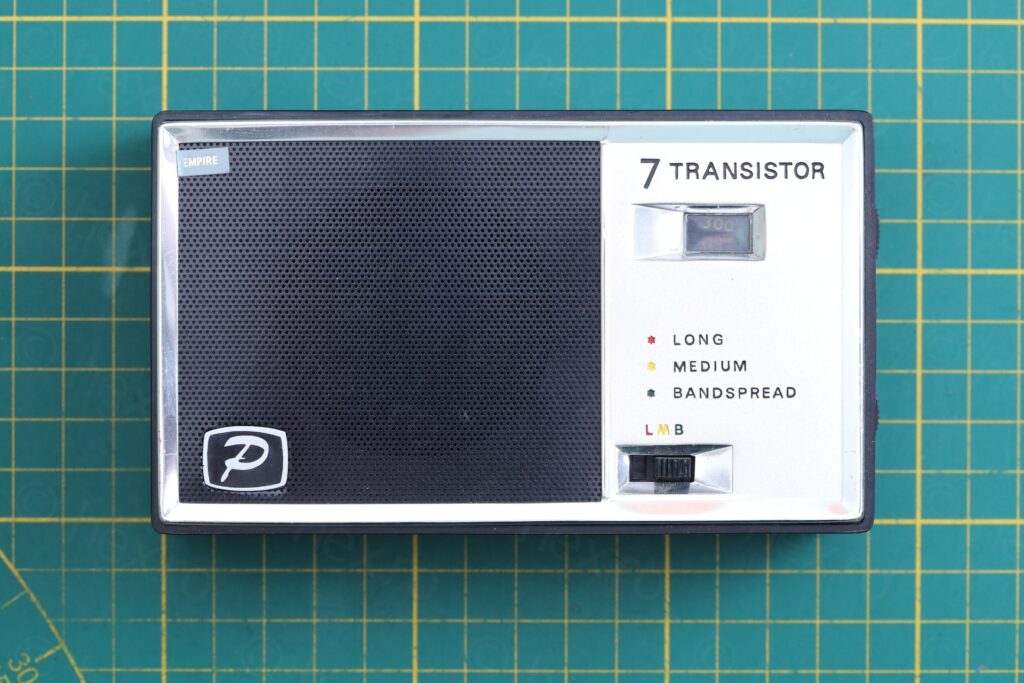

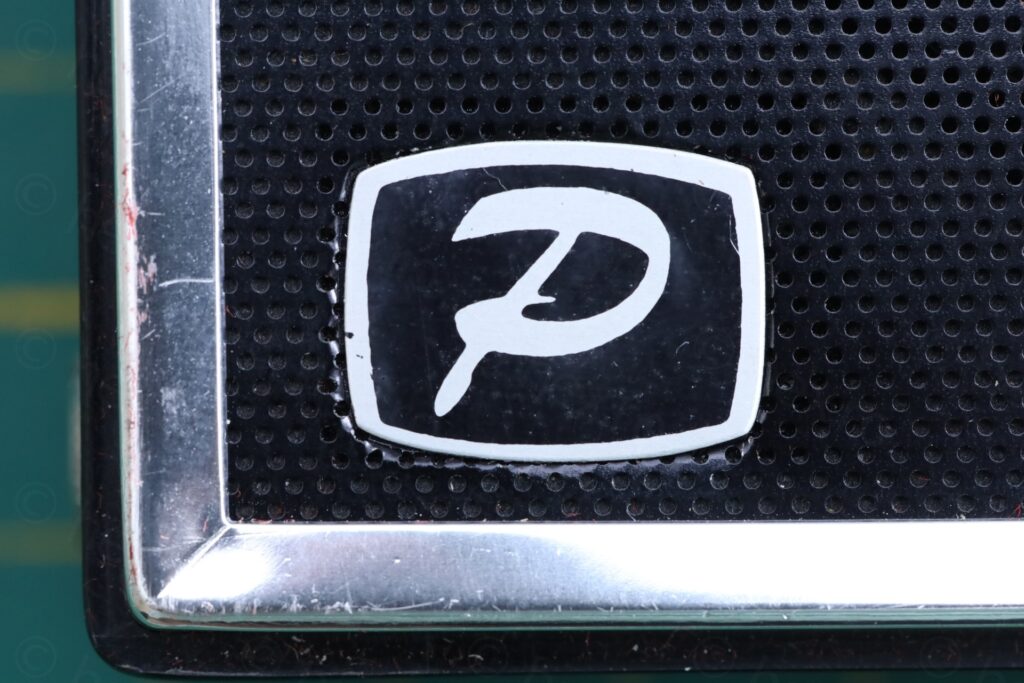
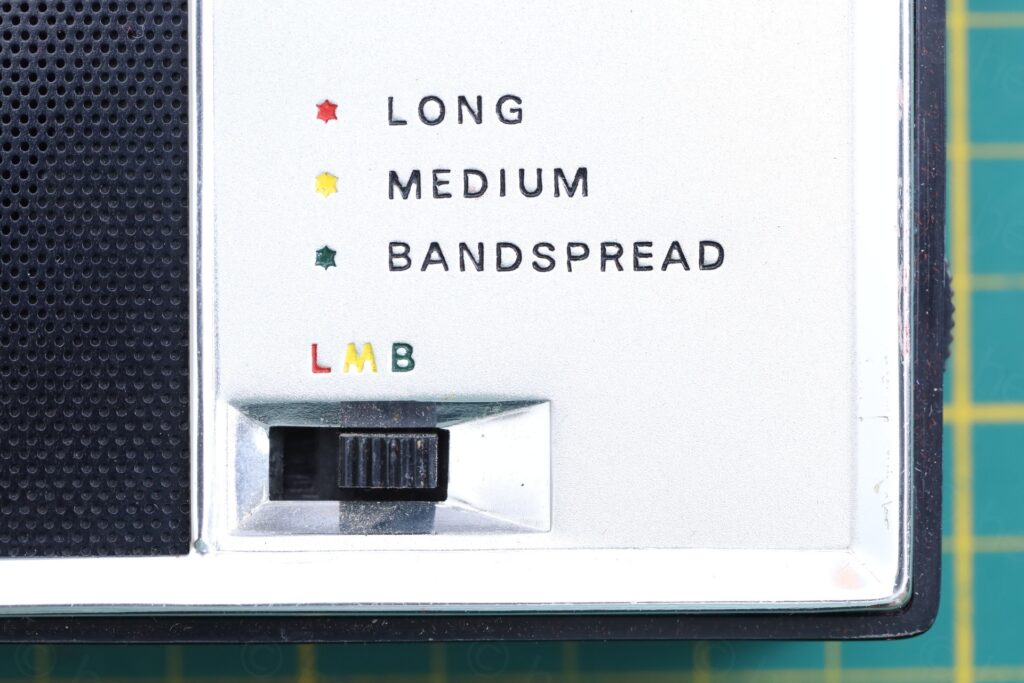
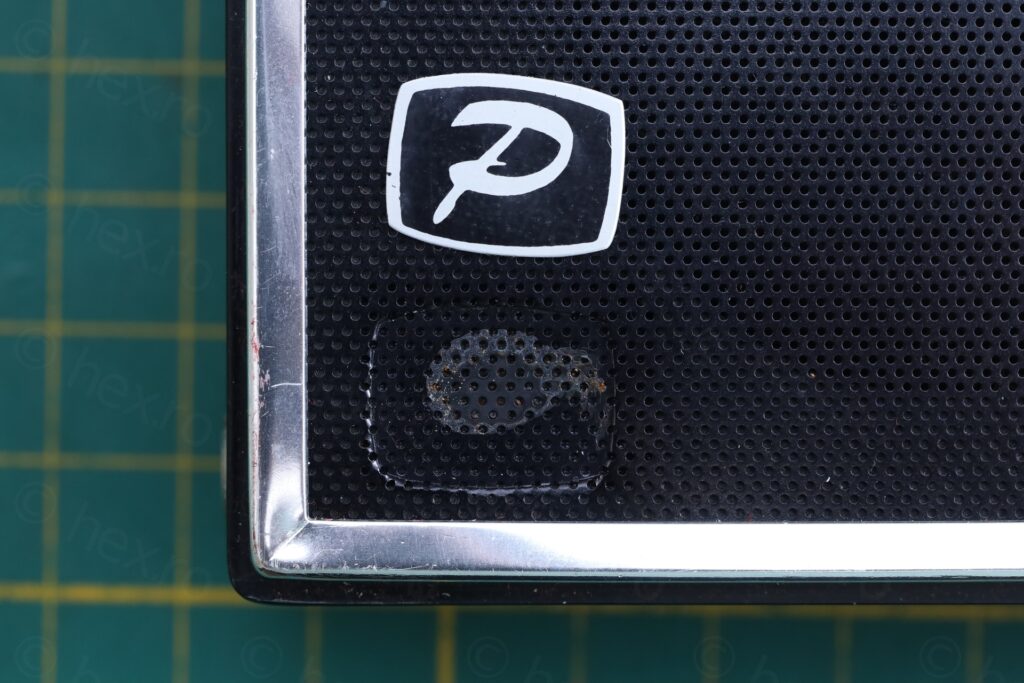
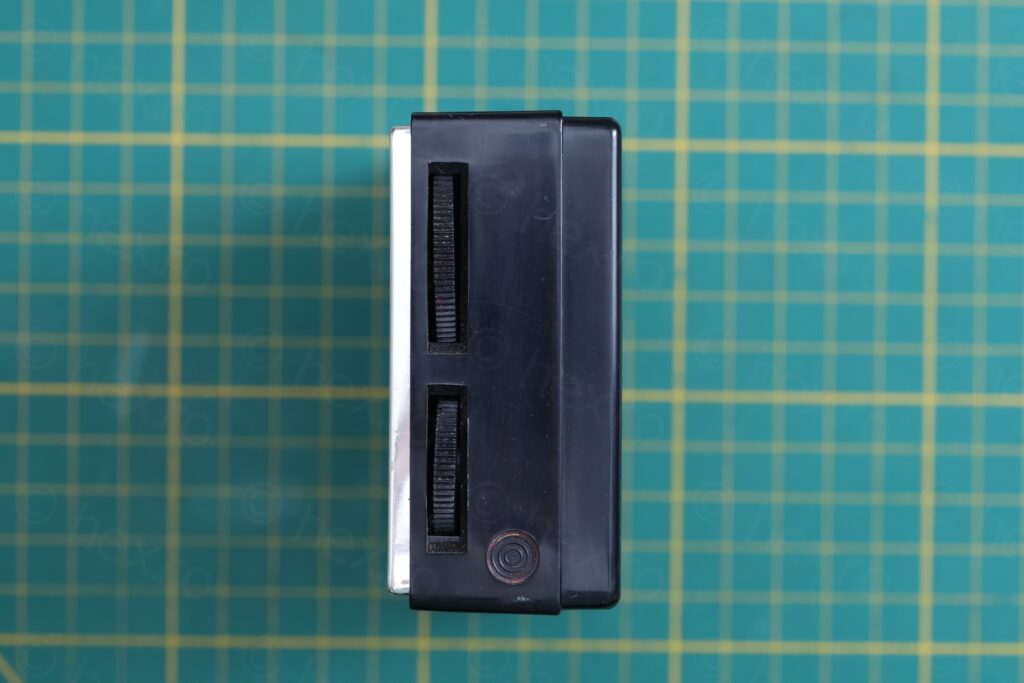
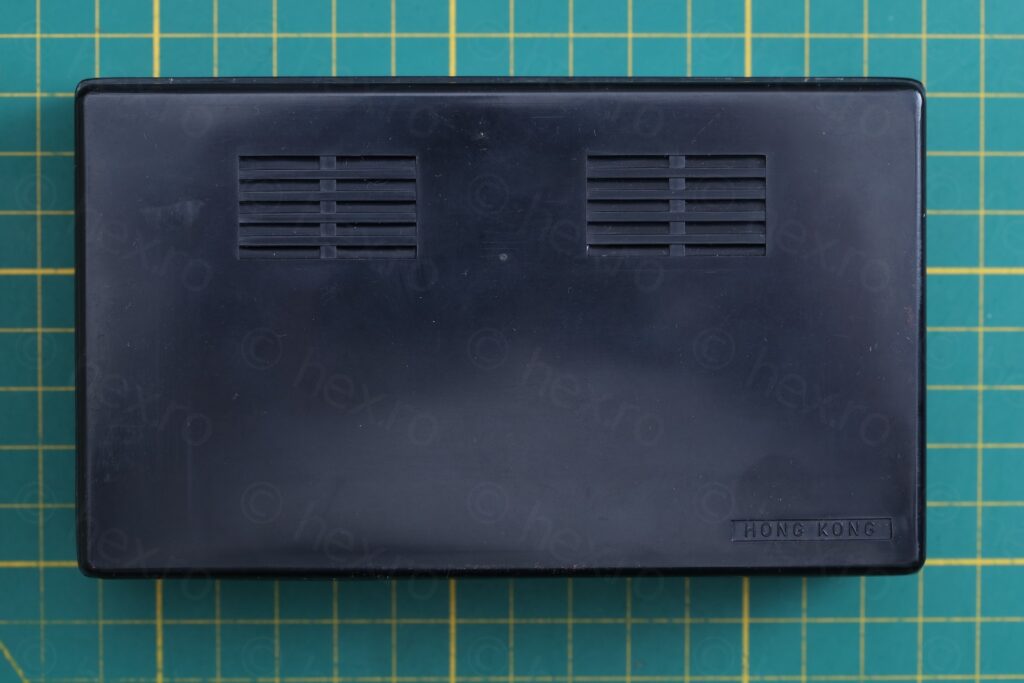
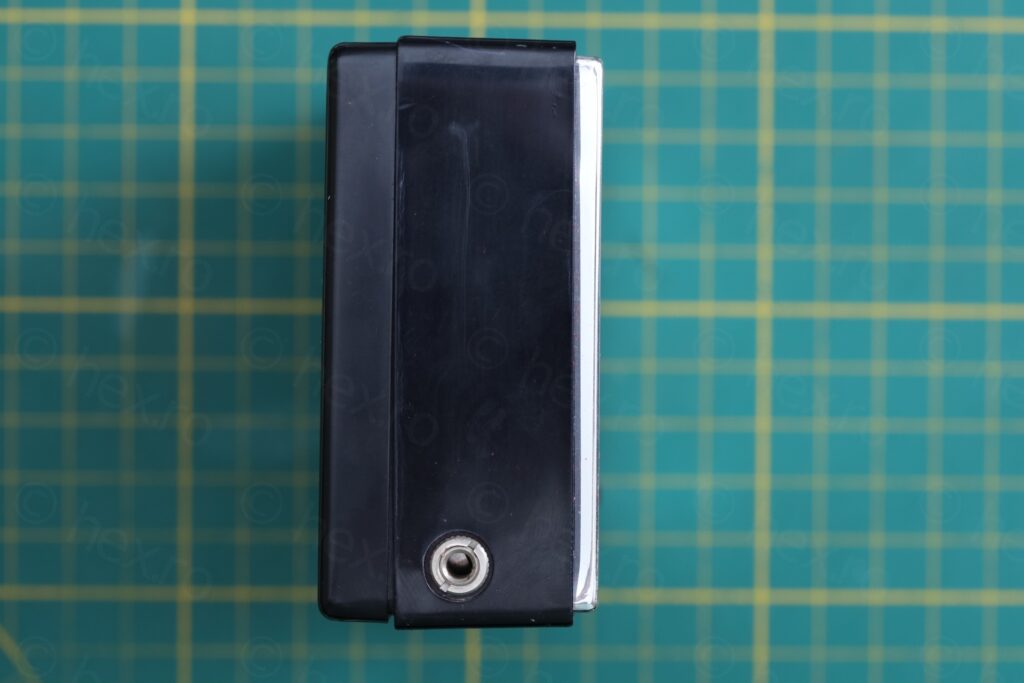
The only problem appeared to be that the little logo (P) de-glued from the grill.
And a look inside the radio – again, everything clean. Battery also looks very old but thankfully it did not leak:

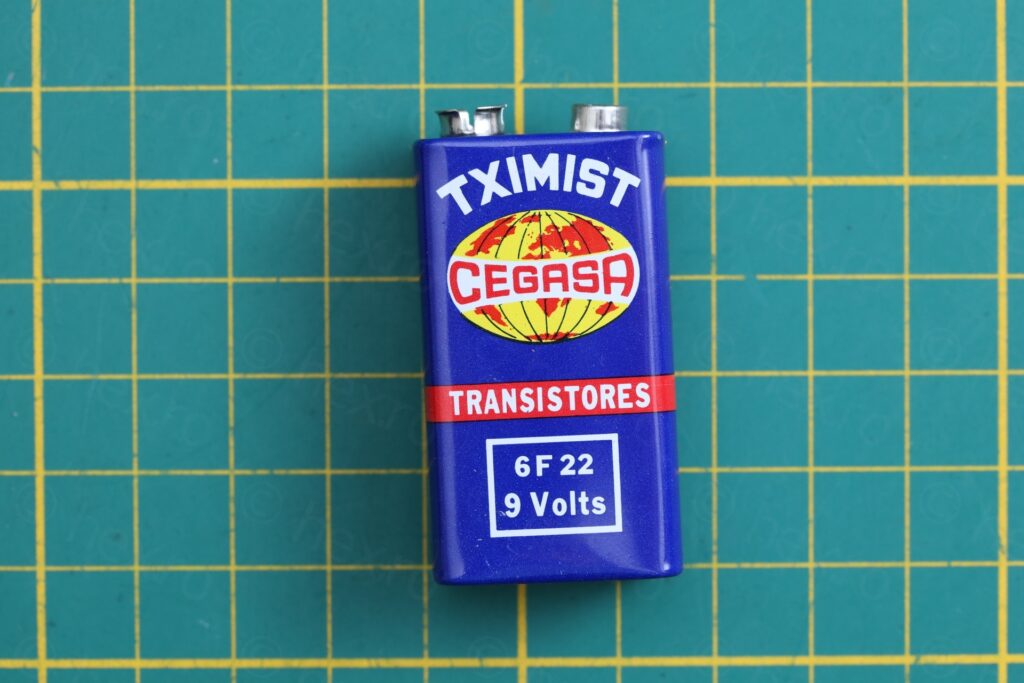
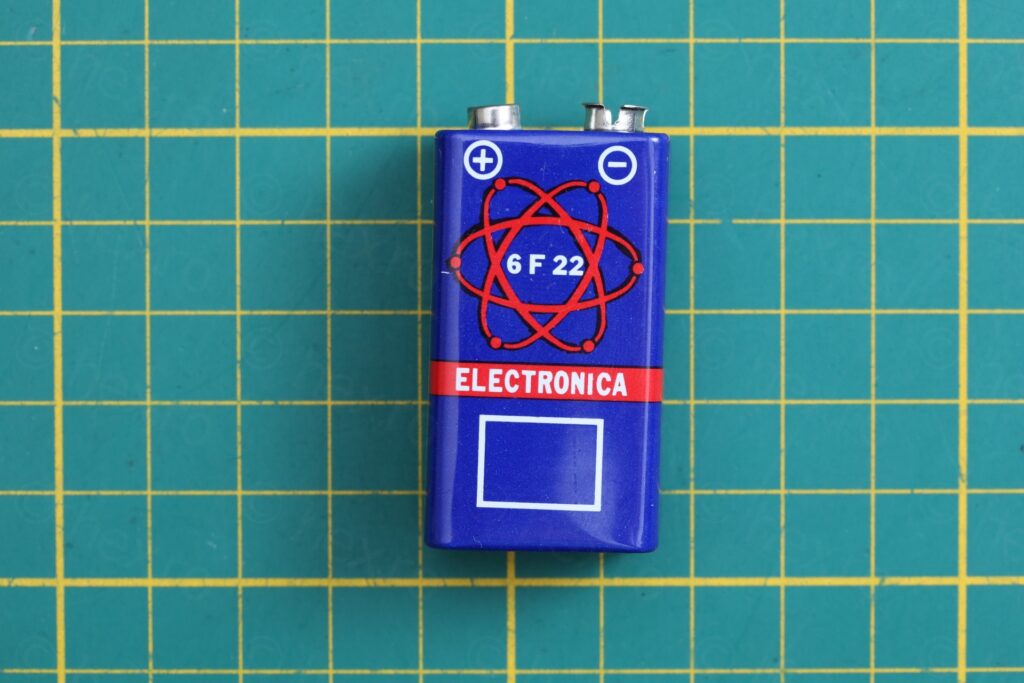
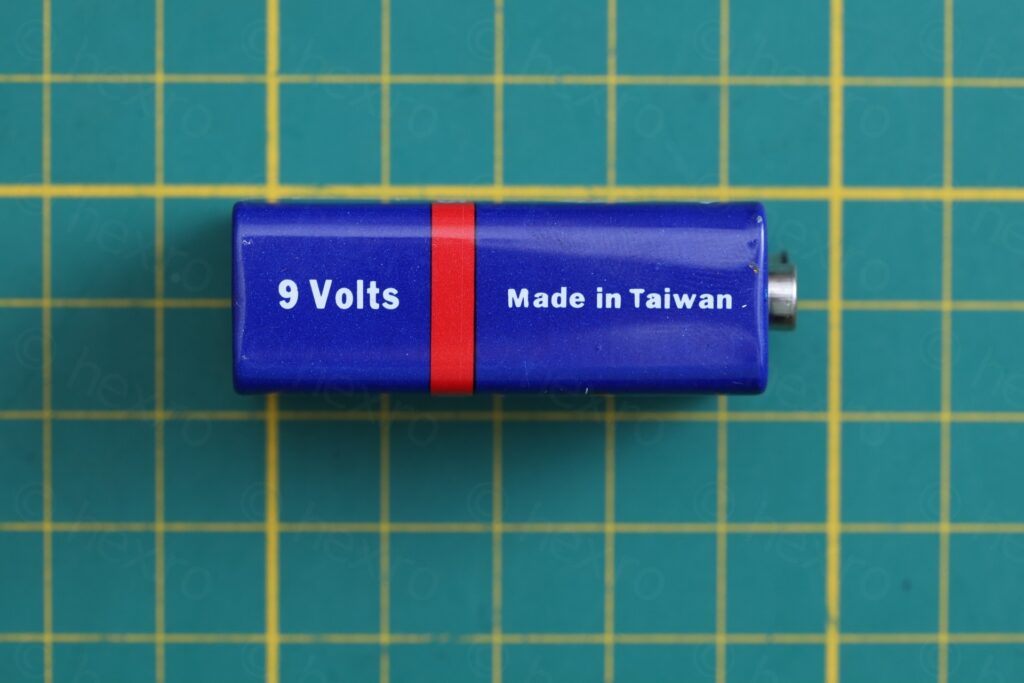

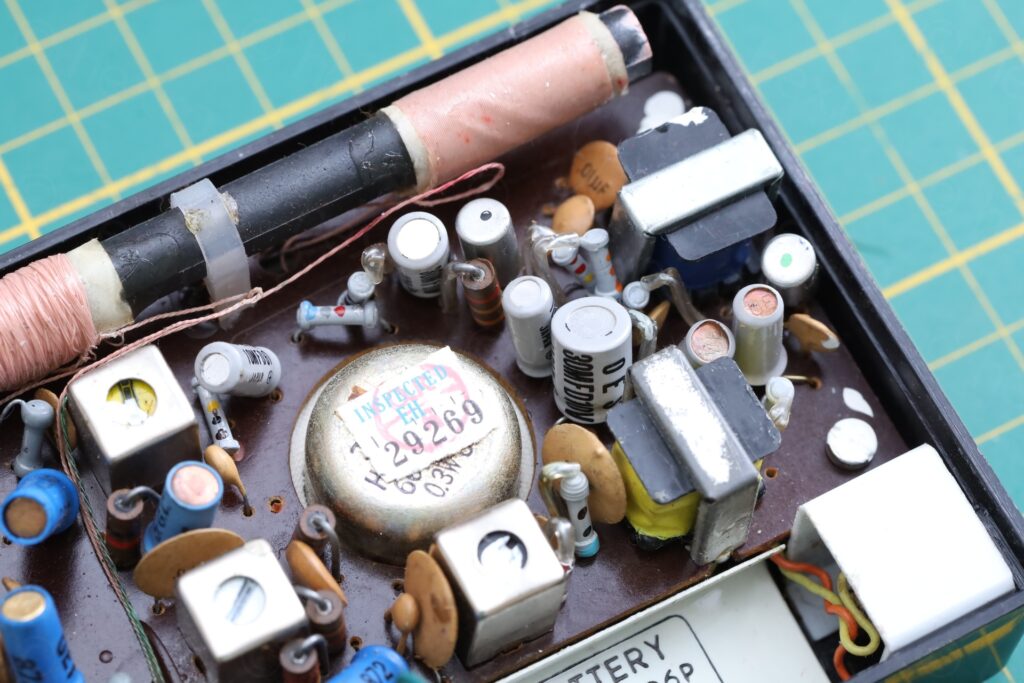
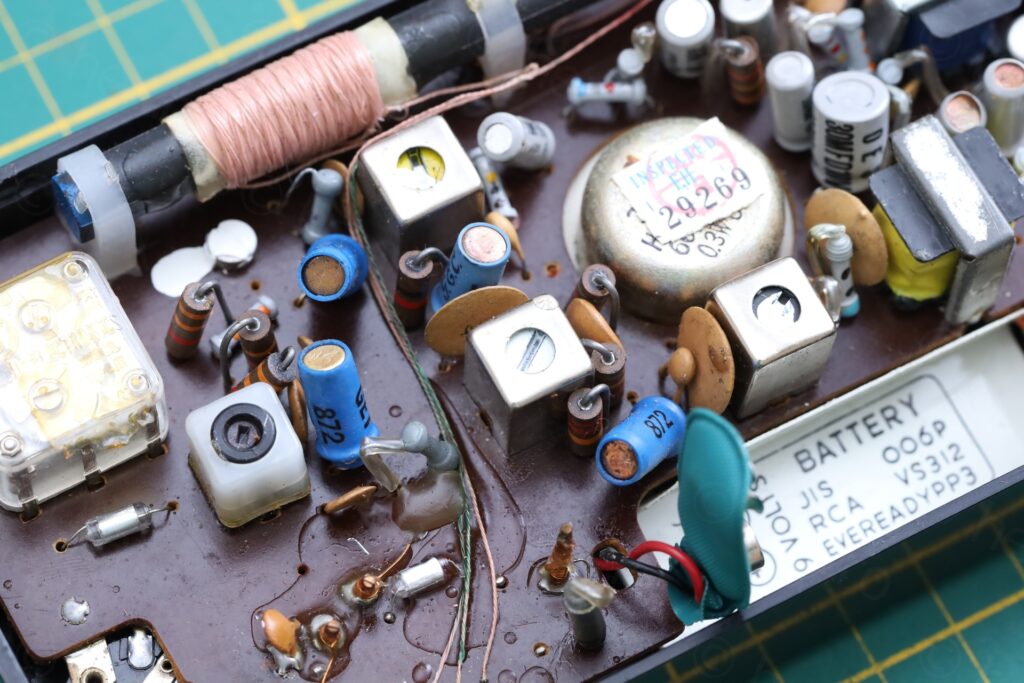
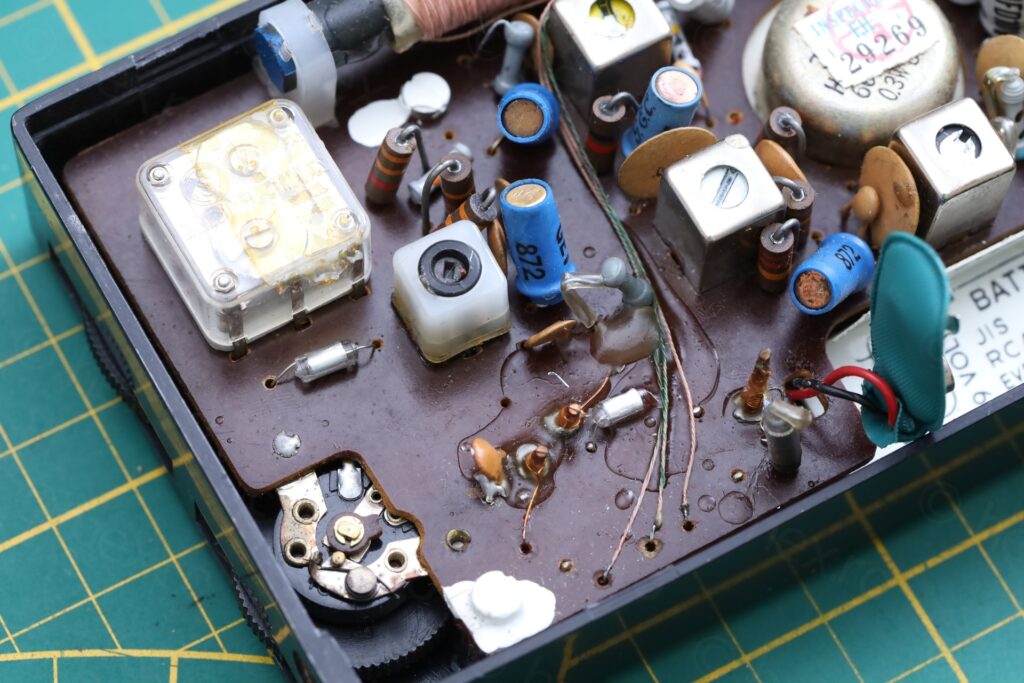
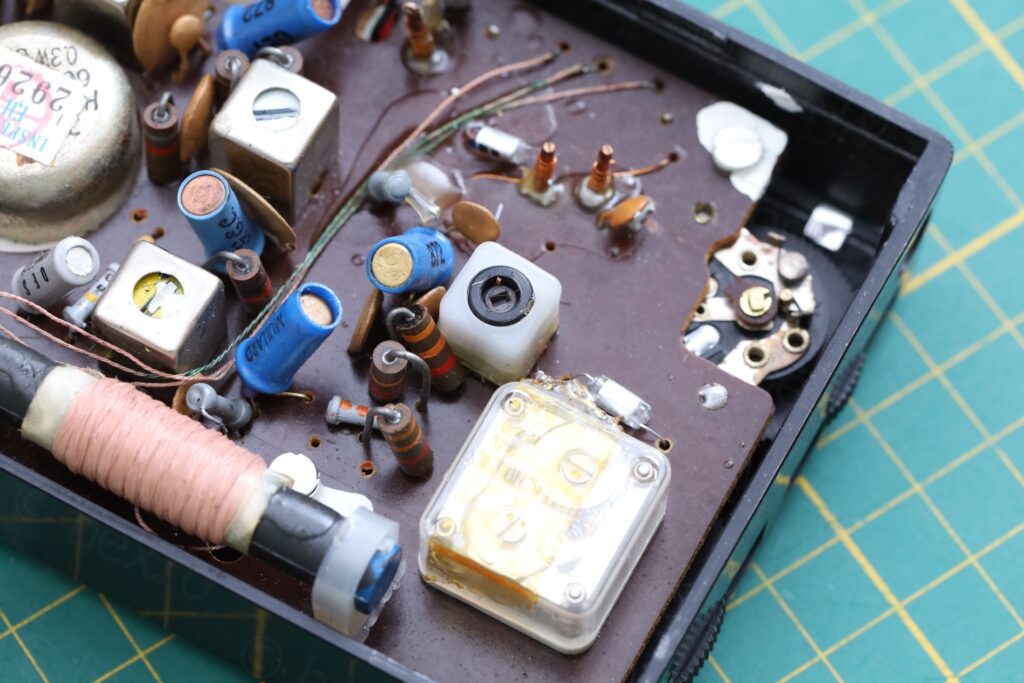
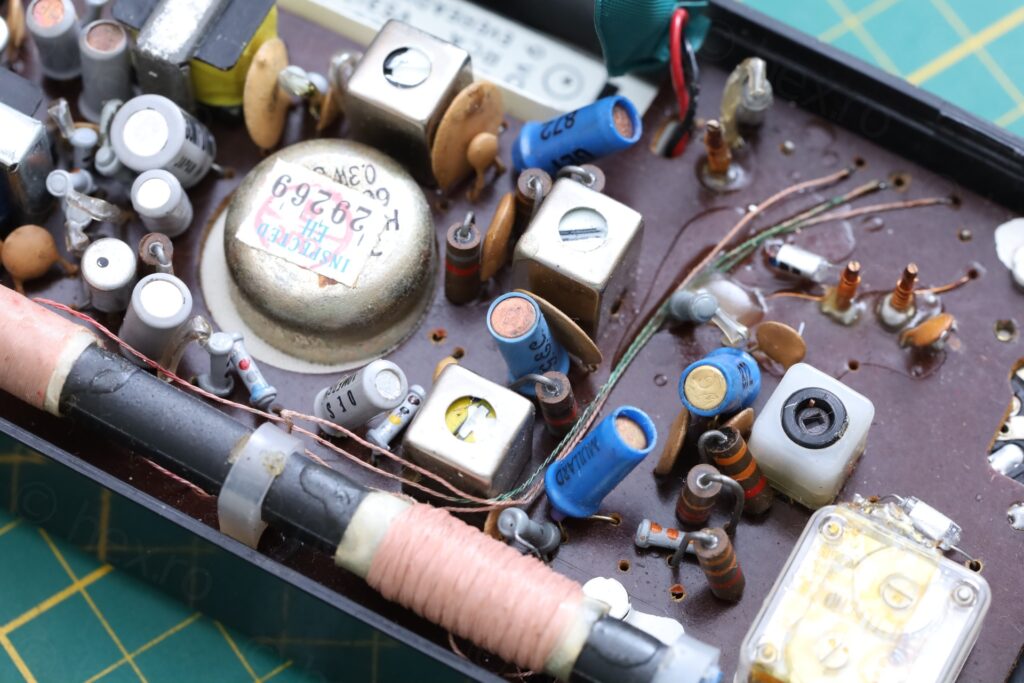
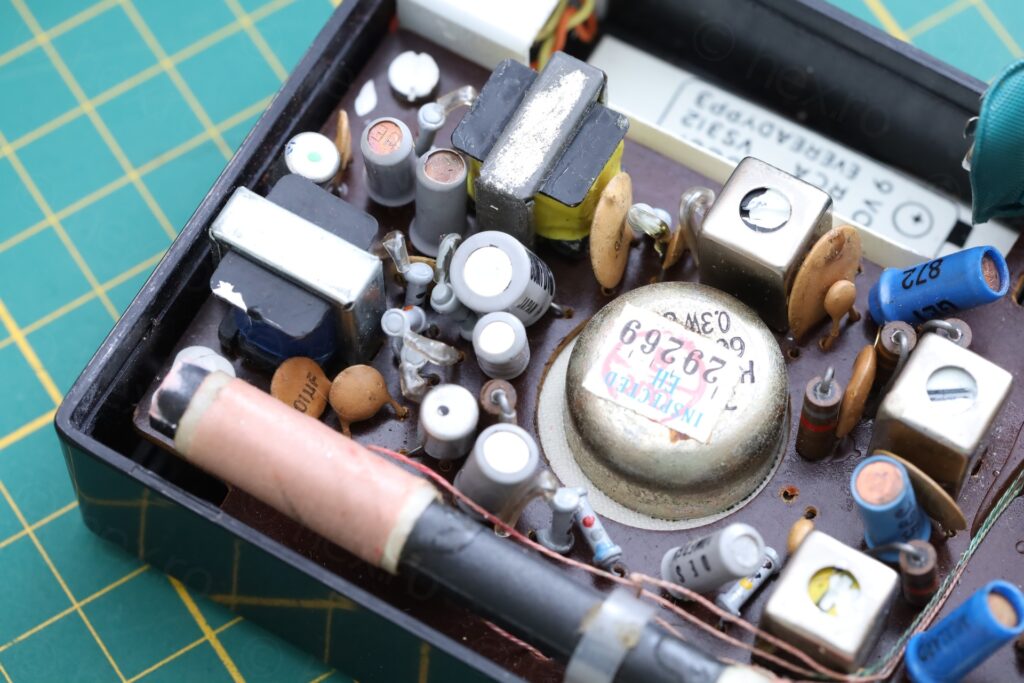
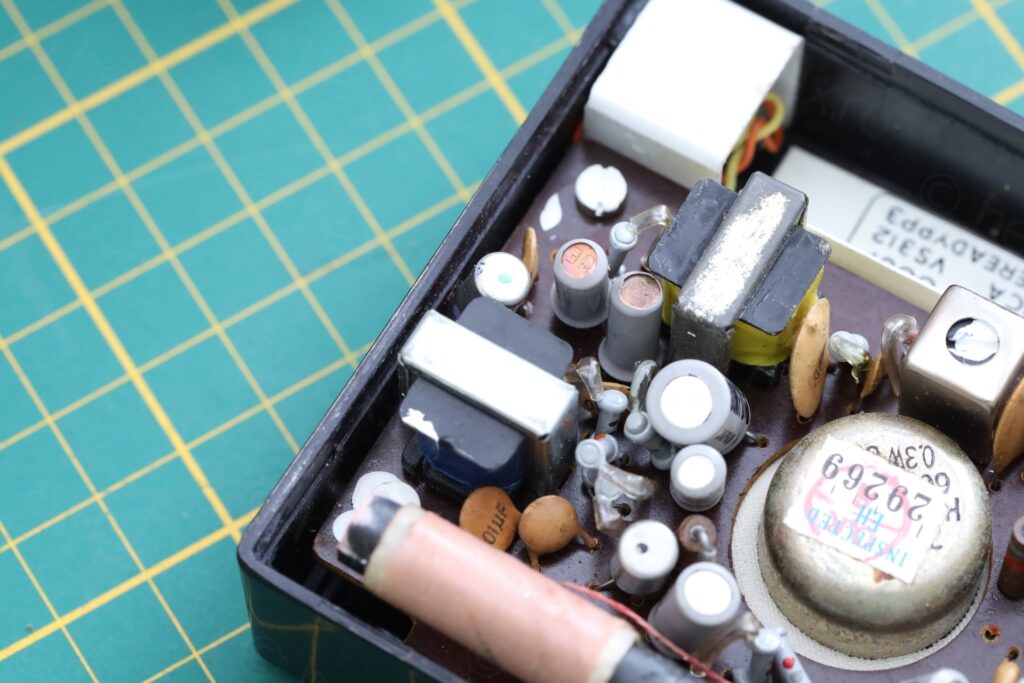
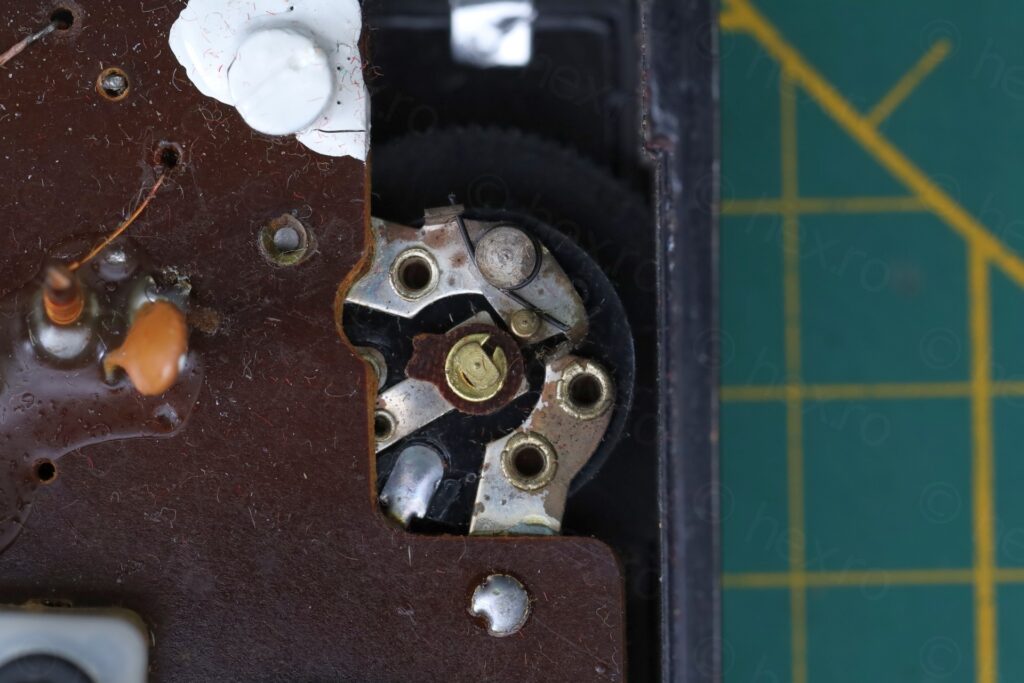
History check
Except a basic entry on Radiomuseum’s website where this exact radio is pictured as manufactured by Perdio / UK – I cannot find anything else about it. It does look similar to https://www.doctsf.com/perdio-popsy-1-empire/f13152 except it has three bands and seems larger.
A possible confirmation on the British origins is that the RF transistors are Mullard GET 872 / Mullard GET 873 and not the French SFTx or German AFx series.
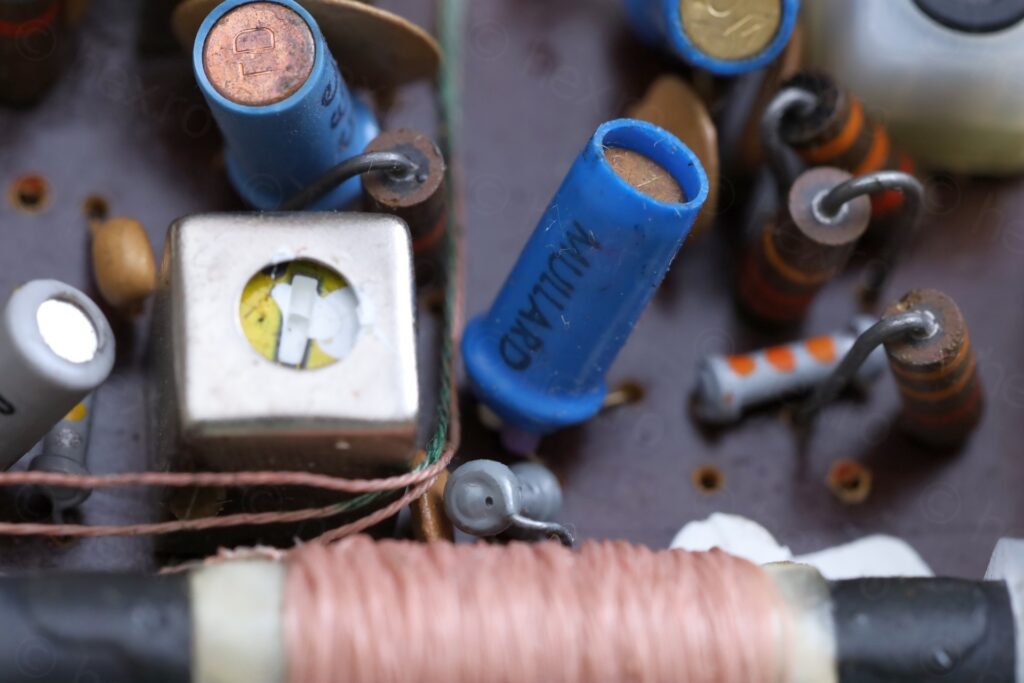
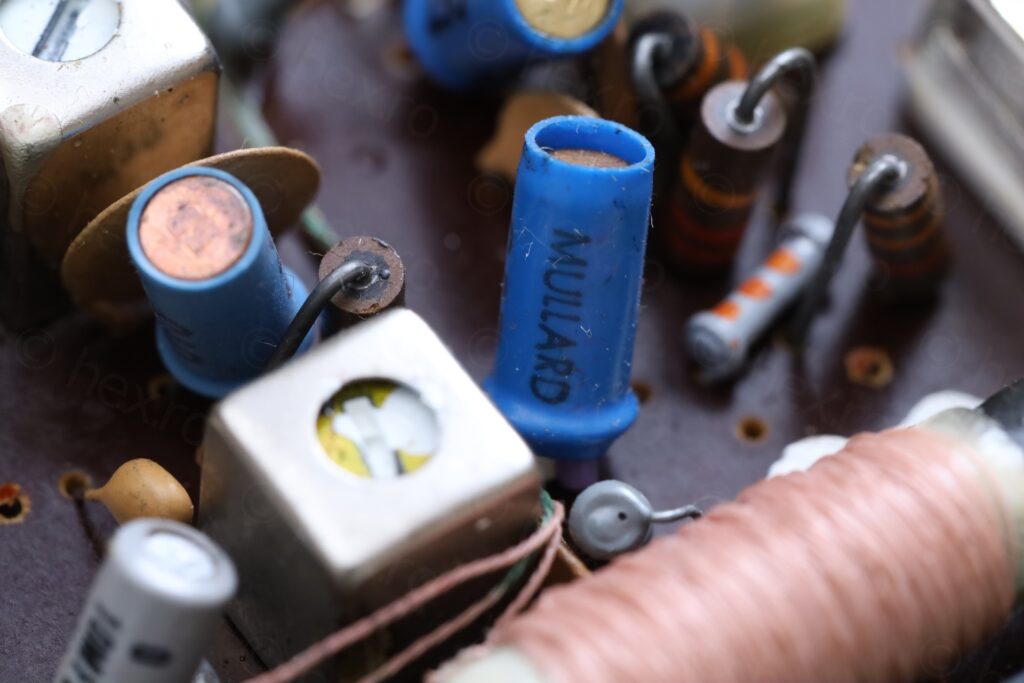
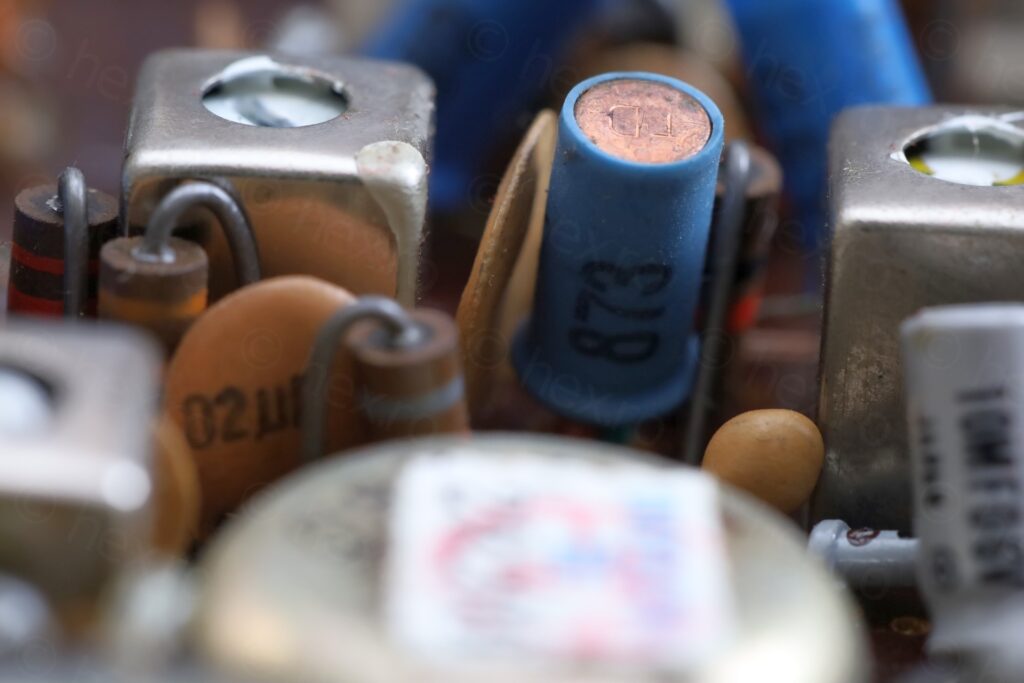
Stations come in very faintly
Using a fresh 9V battery, radio does work but stations are not loud with volume turned up to maximum volume. Tuning is fine, the crackles of the volume pot are loud, but stations not so loud:
Without a schematic to make sense of the radio, the only alternative was to photograph both sides of the circuit board and look at them on the computer.
Taking the radio apart is easy, four screws hold the board down. Found one of the standoffs cracked, but salvageable:
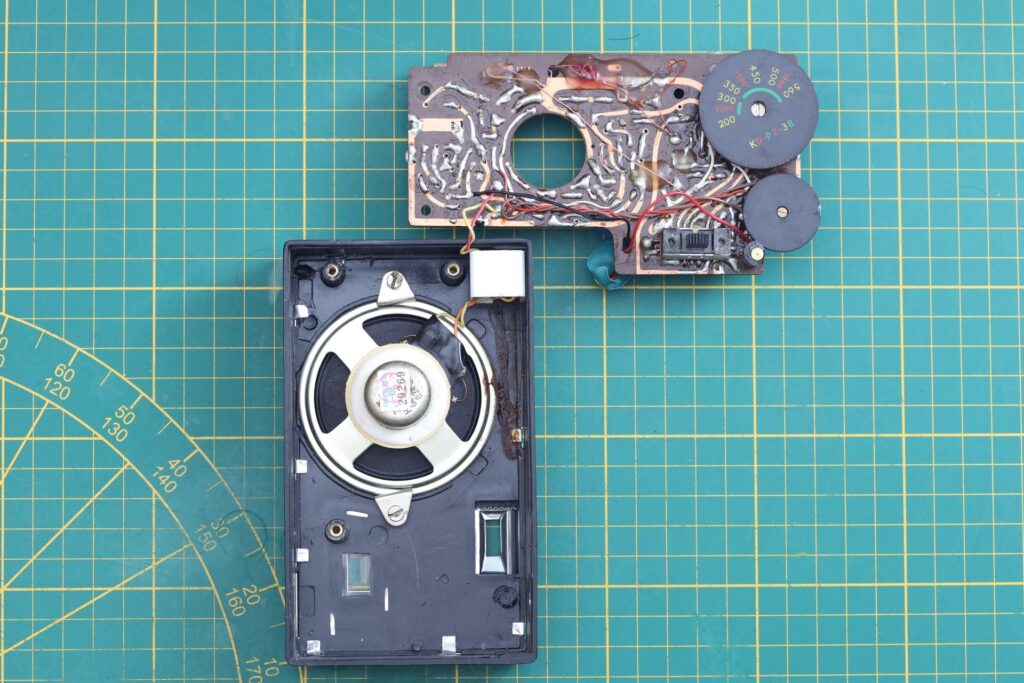
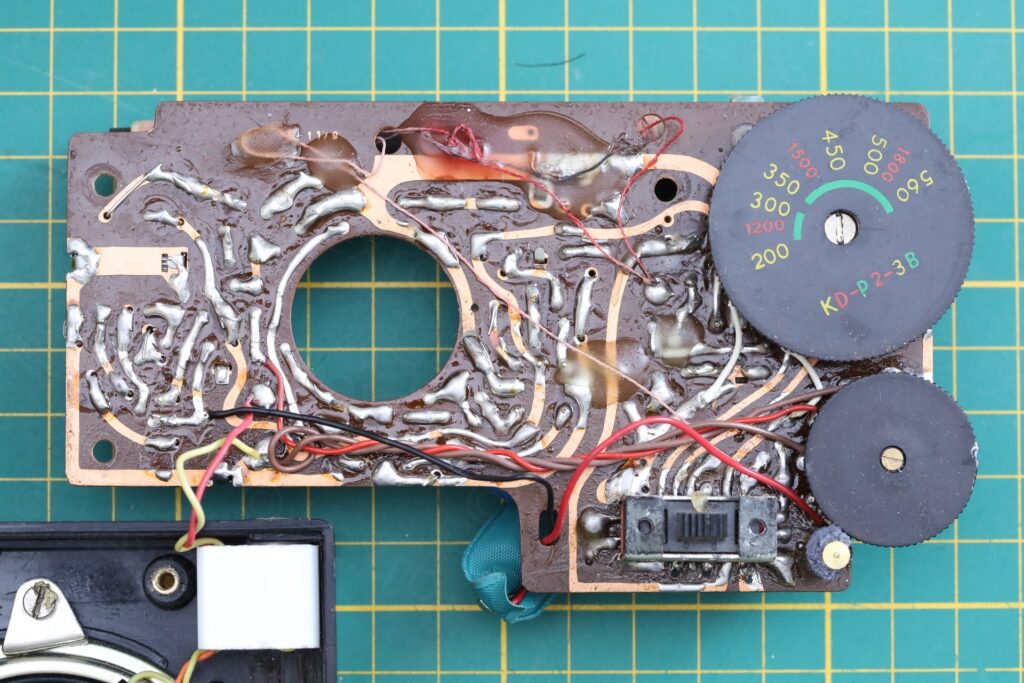
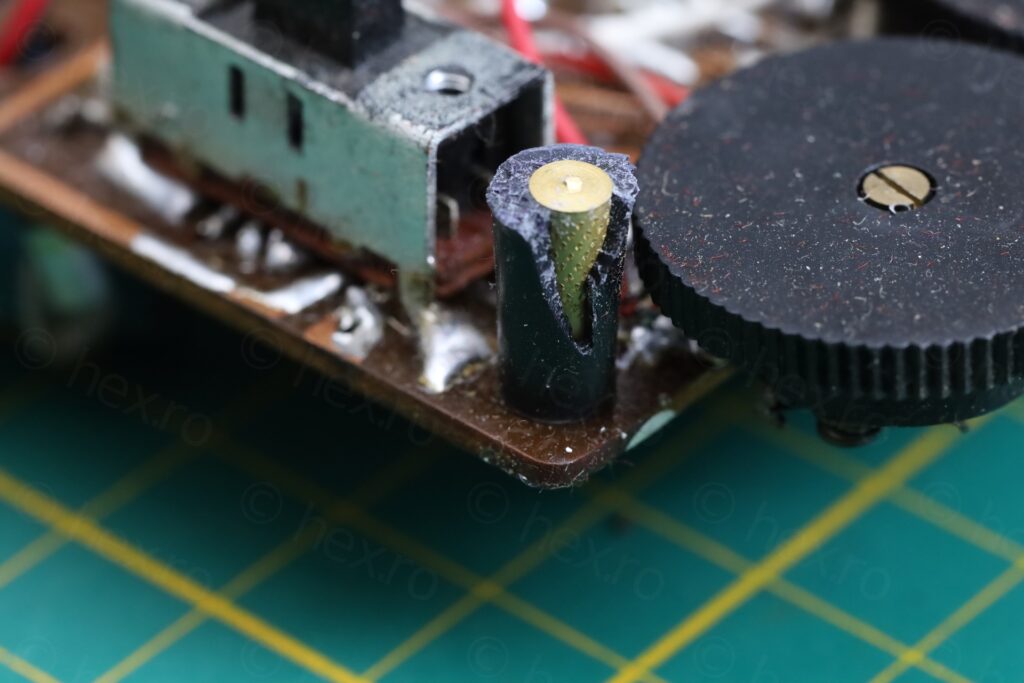
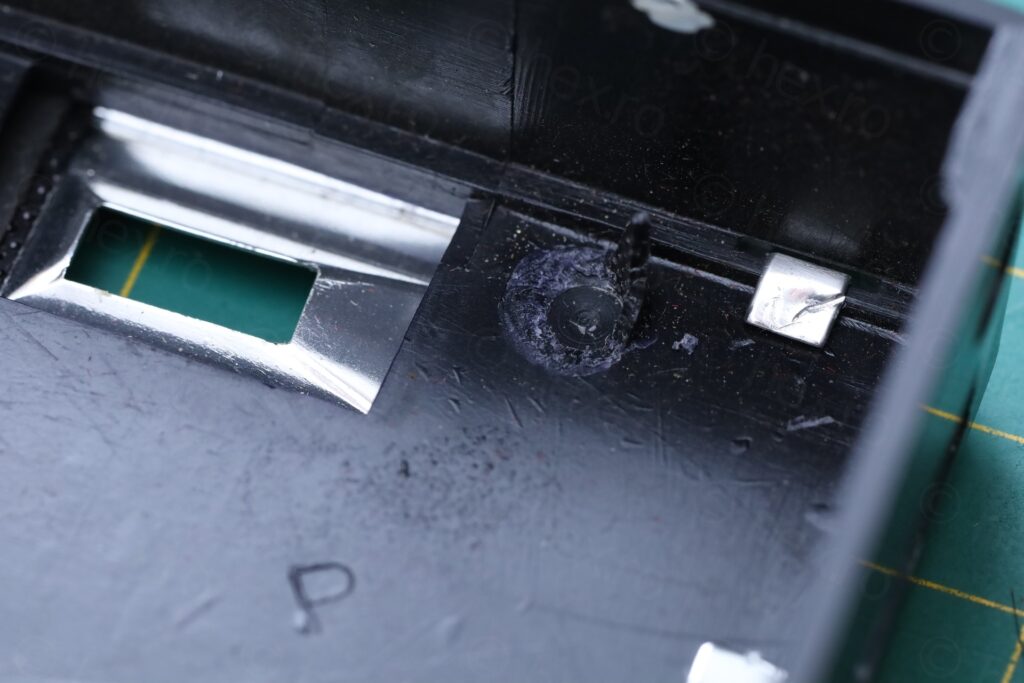
Troubleshooting
My first assumption was that one of the IF transistors does not amplify properly.
Looking with the Infrared camera, an Audio stage transistor was getting slightly warmer (28C, while room temp 24C). Not the problem, the audio part was fine.
Next step was to make sure voltages are fine on the IF transistors. Measuring Germanium PNP transistors is a bit of a brain twist, but it looked like the voltages are fine too.
Without an obvious fault, the only non-destructive test that I could think of was to use a Signal Detector and “listen” to the RF signal going through the IF filters. Surprise, the yellow IF can (first IF transformer) is was attenuating the signal. The input was higher volume than the output ?
The IF cans were not touched – their white wax / paint was still intact. So how come ? I can’t explain, but it seems all three were out of alignment!
Radio is now plenty loud – but it was a little too early in the night – and not so many stations were present on the MW band:
IF Frequency estimation
I choose an empty spot on the scale and using the TinySA Ultra in AM Modulation, I was able to very easily align the three IF transformers.
Since I had no schematics to go by, I first did some tests before alignment: starting off at 455kHz and increasing the level with 1kHz increments, I found that 478kHz was the loudest frequency.
However, the other radios made by Perdio (for which I found schematics) were all designed for 470kHz IF.
After aligning the radio, I confirm this one is also made for 470kHz:
Step 1: Using TinySA in Spectrum Analyzer, I picked a spot on the scale and noted down the frequency of the Local Oscillator: 1818kHz:
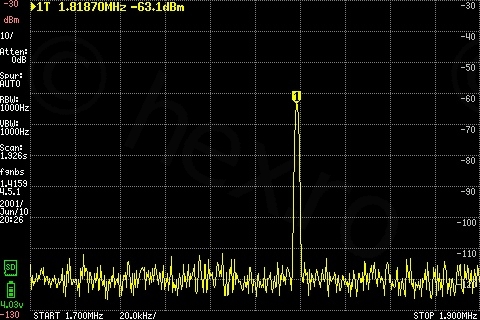
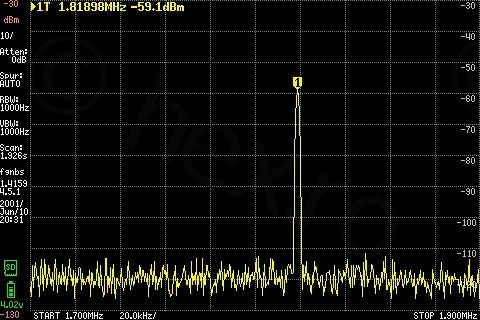
Step 2: Using TinySA in Signal Generator mode, change frequency in 1kHz increments, to see which one is picked up the loudest: 1348kHz:
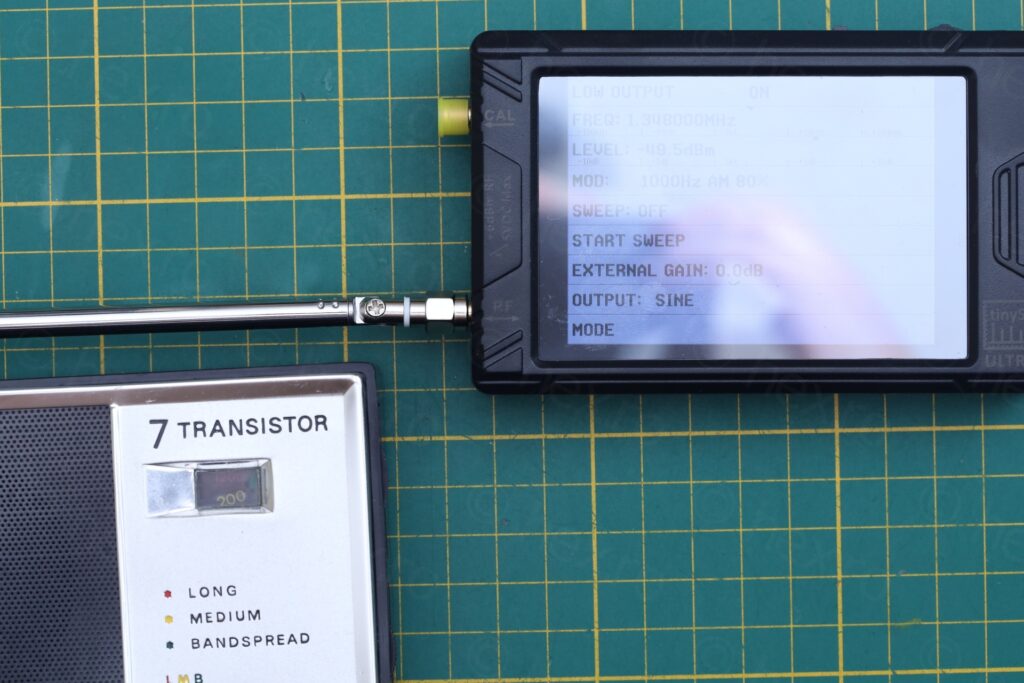
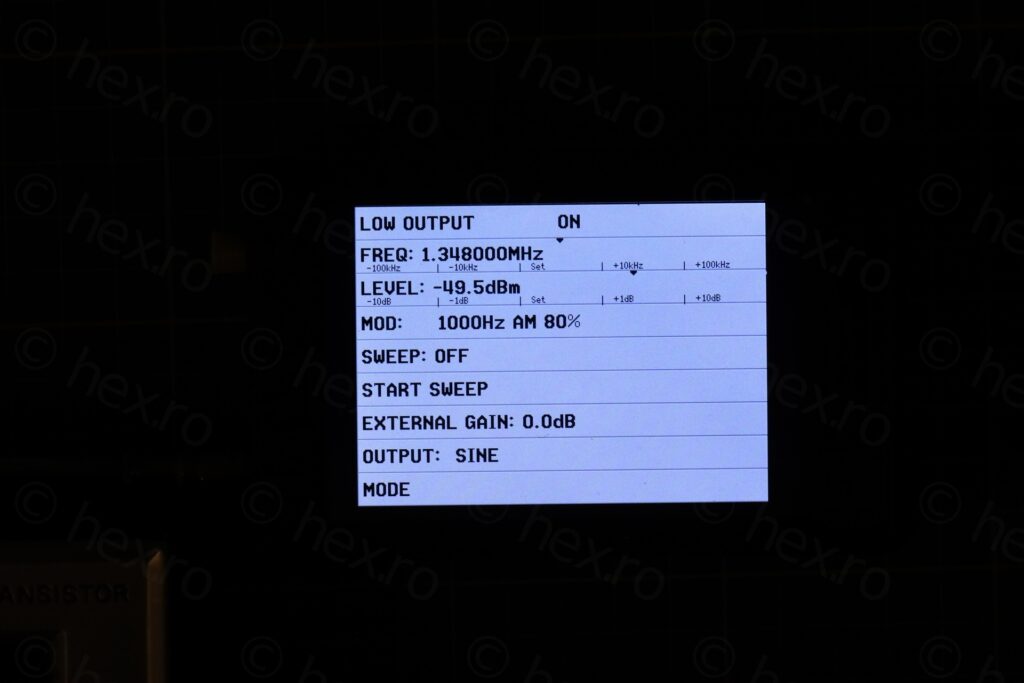
This is a high-side injection radio, and the IF = 1818kHz – 1348kHz = 470kHz
Maybe this explains why the radio is such is a well preserved state. It did not work good enough to be used ?
AM “Bandspread” band
I dug a bit more into finding out what “Bandspread” band means.
Using TinySA and some trial and error, radio seems to respond to AM modulated signals between 2347 kHz and 2630 kHz. A quick Google search reveals that this is the 120m band, mostly used in the Tropics ?
Digging more, found a possible explanation from user G6Tanuki here: https://www.vintage-radio.net/forum/showthread.php?t=166958. He clarifies that 120M band (along with 60M and 85M bands) was less susceptible to thunderstorm noises. Very interesting!
Wrapping up
Super-glued the stand off back in place and left it more than 1 day to cure:
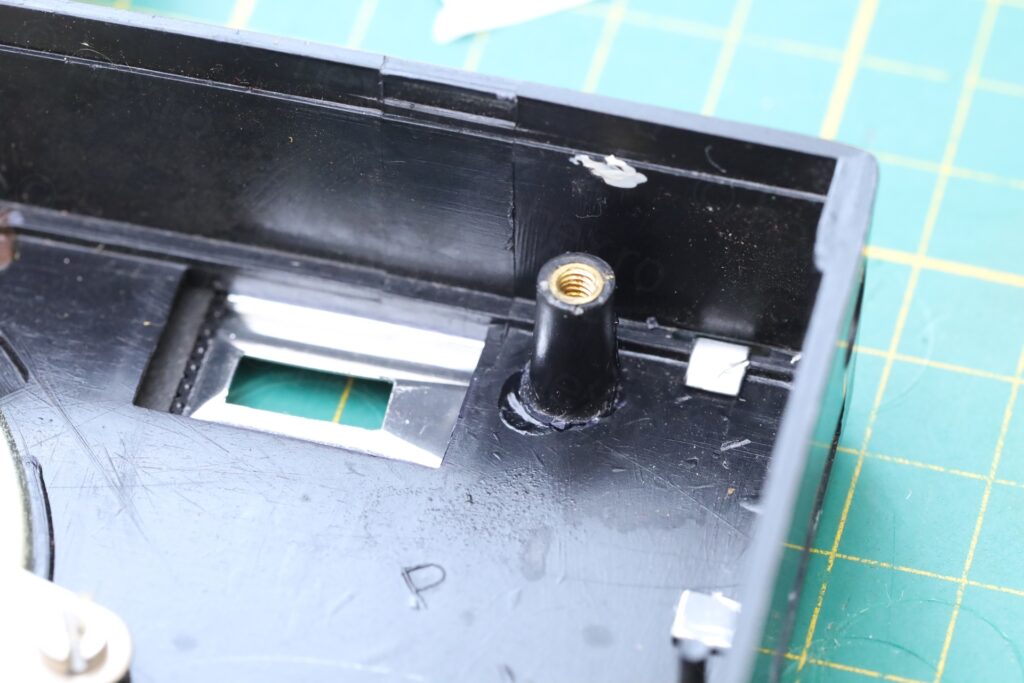
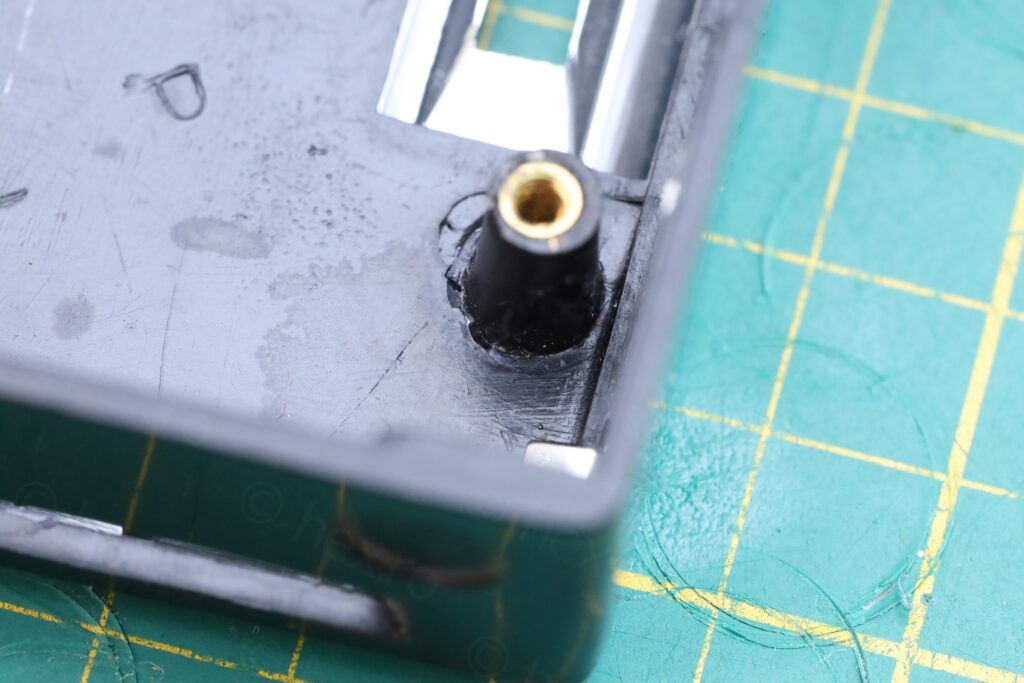
Cleaned the Volume potentiometer and the Band switch with contact cleaner:
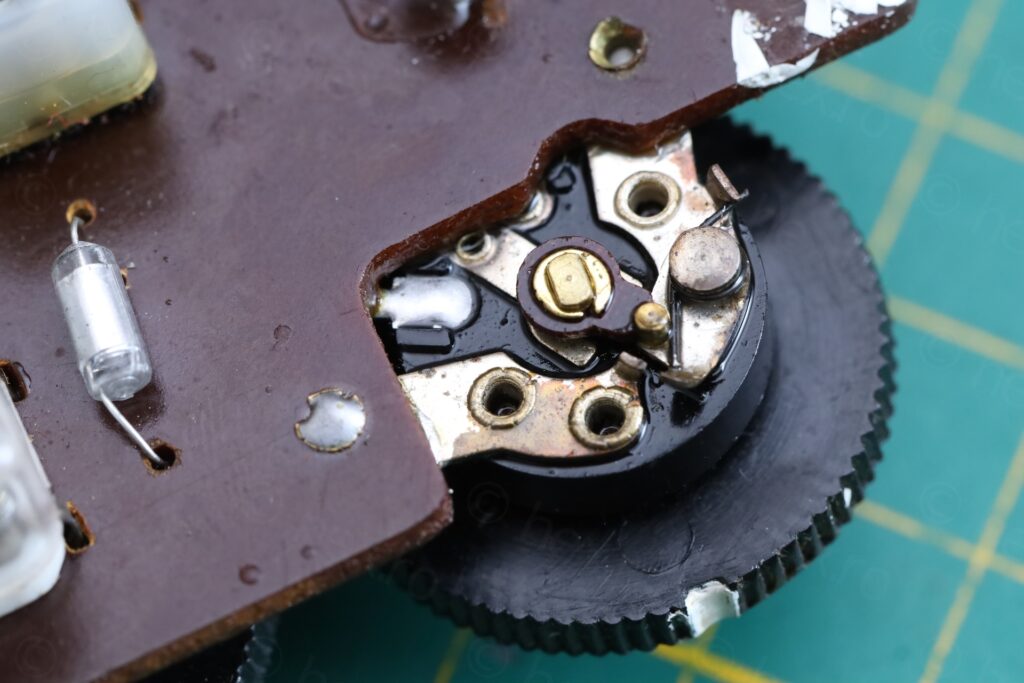
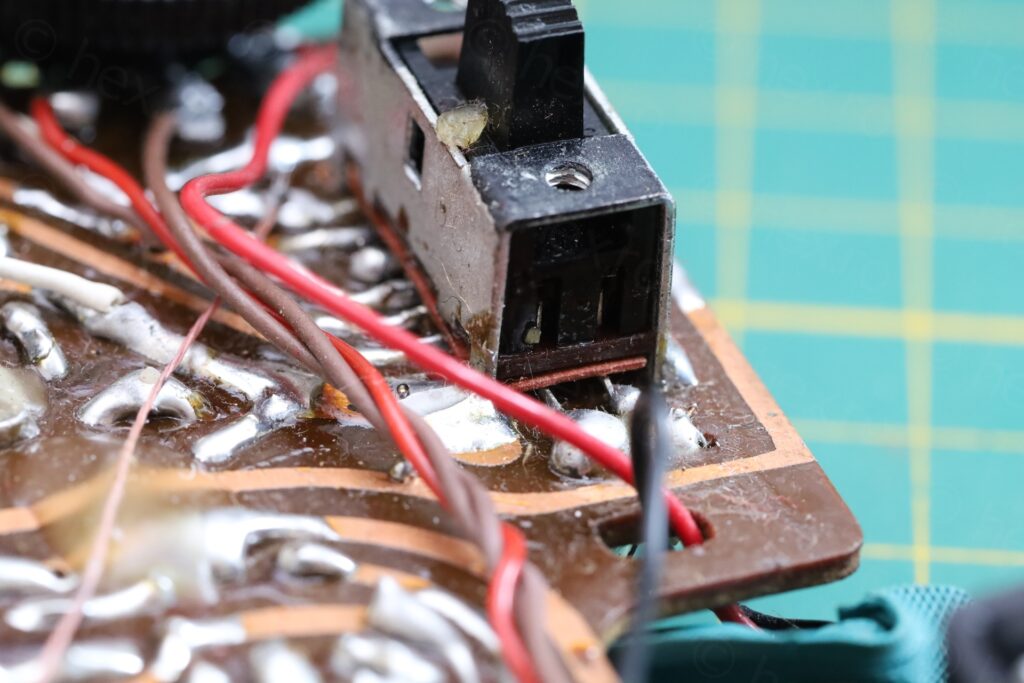
… and reattached the logo (tried initially with hot melt glue, failed as it would not stick, then I went back to a bit of super-glue). It held being inserted into the holster:

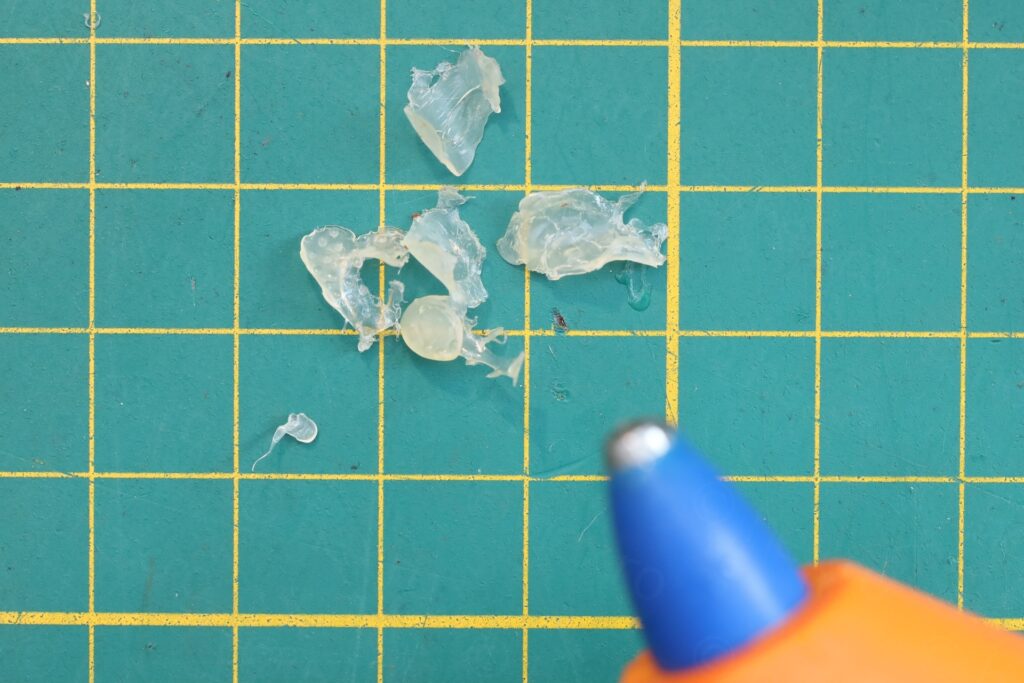

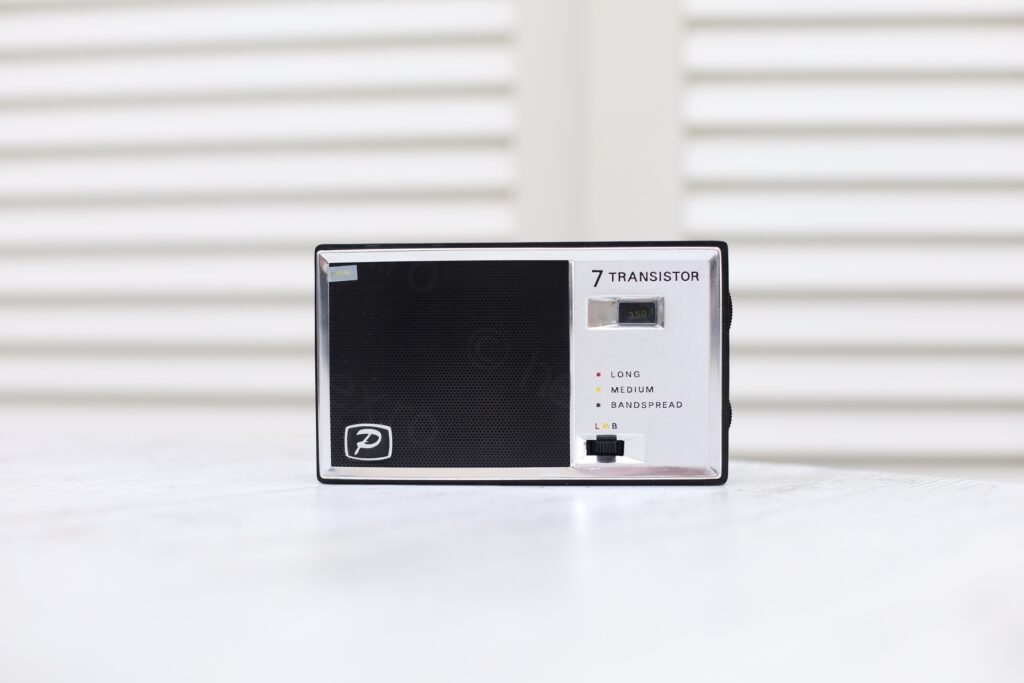
Cute radio with its Bandspread band and British germanium transistors 🙂


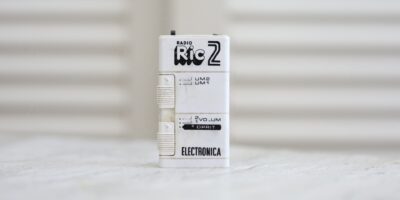

Leave a Reply